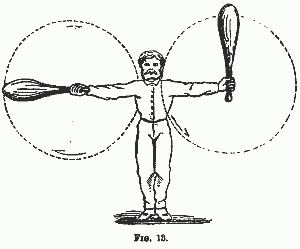A big part of learning is the belief that you can actually do it. It won’t happen overnight but if you put in the work, you know you will get there. That is hope.
Hope is not goal setting or wishful thinking. It is really belief.
Unfortunately this is where a lot of people fall down. They look at something they say they want to learn or be able to do and their first response is “it’s too hard” or “I’m too old for this sh*t” and “I will never be able to do it”. Rephrasing that to “that looks challenging and I’m going to work up to it” would be a better way to approach learning.
Why put a self imposed ceiling on your own ability before you even start? These things are self fulfilling so if you do not believe then you are sabotaging yourself before you even start. By not believing, you will make excuses not to practice, not to set time aside for it, and then of course your belief will come true. It’s not really the belief itself but how the belief affects your actions. Conversely, you can actually believe in yourself and dedicate time, effort and maybe money towards whatever endeavour may have piqued your interest.
However, hope is just the first stage. Honesty is the hardest thing for people these days. Or so it seems to me. “I want to get to the Olympics”, or “I want to look like him/her”, or “I don’t have any time/It’s too expensive”. These are the dreams and excuses that people use. It is nothing more than games that your ego plays with you. They are not real.
However, as it involves honesty with yourself it is very difficult to overcome. So either you work three times as hard or you seek help. Get a coach, a friend, someone who has been there before to guide you.
As the saying goes, if it is really important to you then you will make the time. If not, well, there are a million excuses you can use to lie to yourself. But really, you just don’t really want that thing enough.
Think about the last thing you chased, be it a job, a person or something else. How much time did you think about it and work on it and spend every waking moment doing something to get yourself closer to it? Now if your answer was along the lines of “lots” or “almost all the time” then that was something you actually wanted. Now think about if you are willing to put in the time and effort towards what you want to learn/be able to do. Is it even close? If no, then you don’t really want it and you may as well be honest with yourself now and save your energy. And there is nothing wrong with that. Good goal setting is working out what you really want. Not because your coach told you. Or your parents. Or your friends. It is something you want. It is something you will move heavens for.
If your answer was yes, and your previous answer to the hope question was also yes then you are on the right path. You are ready to learn. That is the preparation phase.
Then comes the work. Hard work. And How to.
This is when you roll up your sleeves and put your money where your mouth is so to speak. This involves the daily grind and effort. This is where a lot of people fall off. Not because it is difficult but because they are not really that interested and never took the time to ascertain if they were really interested before starting out. They were not honest with themselves.
The time honoured way is to work hard. There is no substitute for it. But working hard also requires consistency. Like eating, sleeping etc you have to make time for it. But as we all know it is much easier when we have a guide or someone to show us the way. To make best use of our time and energy. To make sure we do not get too sidetracked. And to keep us walking on the path.
Because simply working hard could end up being a case of bashing your head against a wall without the know how and the skills. It’s finding someone who knows the basics as well as the progressions and variations and being willing and able to impart some of it to you. Sure you will have to fiddle and find your own flavour but a good teacher can shorten the learning curve a lot. Just don’t expect to have your hand held or have it spoonfed to you. You will learn little without the requisite experimentation and exploration demanded of learning anything well.
And like any growing process, there will be pains and setbacks. But that is part of the process. No river runs straight.
Because if hard work is acceleration then know how is direction.
But it is all for nought if you cannot be honest with yourself in terms of where you are and where you want to go. And you do not have the belief to get behind the wheel in the first place and take that first step.
Honesty, hope and how to.
Simple right?




